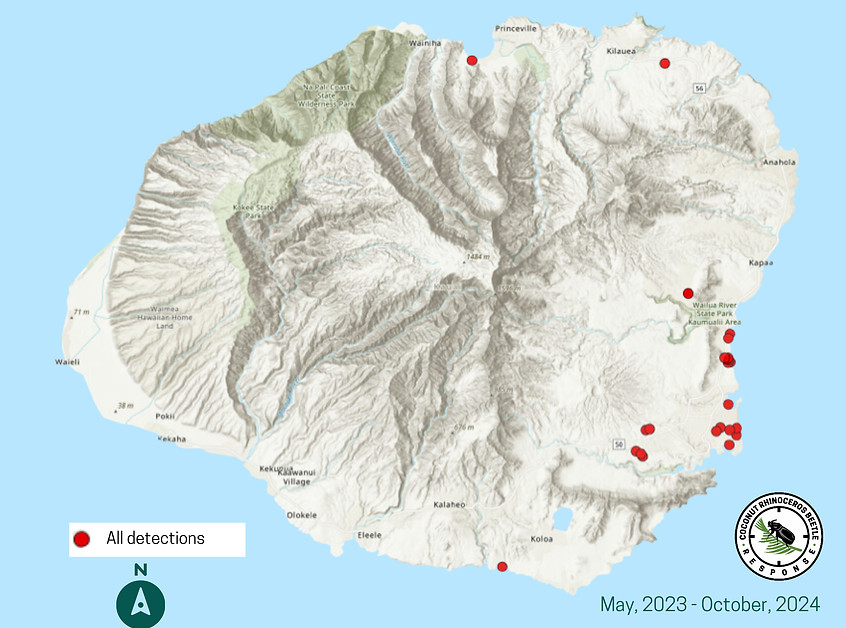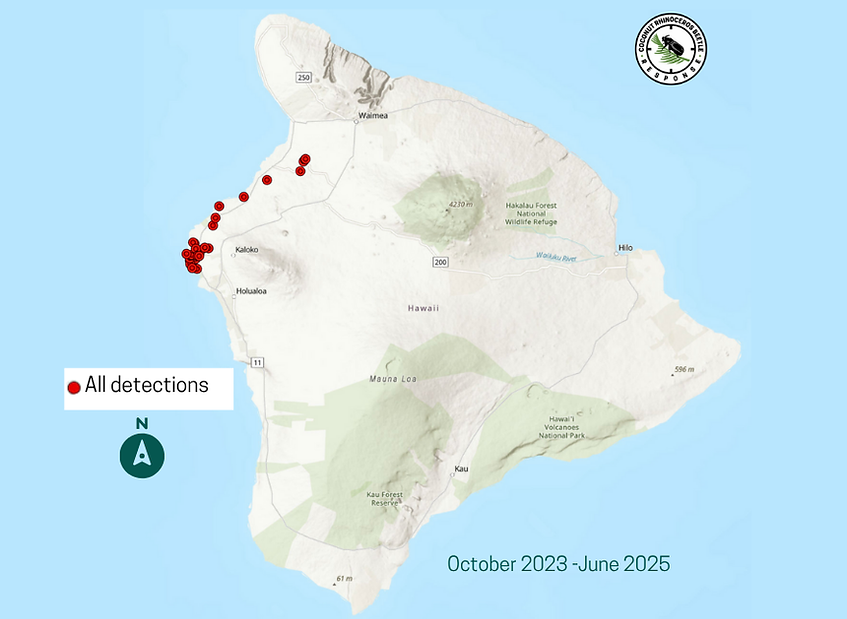HISTORICAL CONTEXT
Although native to Southeast Asia, the distribution of CRB today includes many Pacific Islands, including O'ahu and recently Kaua'i, Hawai'i Island and Maui. To date, CRB has not been reported on Moloka'i, Lanai, Ni'ihau, the mainland United States, Central America, or South America, but any tropical ecosystem that produces host species for the CRB is at risk of infestation.
CRB was discovered at Mamala Bay, O'ahu December 2013. It is assumed the beetle was accidentally introduced on a flight from an infested island in the Pacific. While it was first detected at the airport (HNL), there are both military and commercial flights from areas with CRB populations.

CURRENT STATUS
O'ahu
.png)
.png)
The entire island is considered infested but many areas are in very early stages with very little damage present (Airport area through Hawaii Kai). Treatments are focused on ports to minimize the chances of accidental transport off O'ahu in cargo or on vehicles. There is no need to report finds on O'ahu since populations are widespread but reports on other islands are still requested.
Kaua'i

Detections continue in Līhuʻe and Wailua areas. Recently, CRB have been found near Nāwiliwili Harbor and Hanalei. Kaua'i Invasive Species Committee and HDOA are primarily managing trapping and surveys. UH and HDOA have initiated some palm treatments in Wailua. Map created by CRB data team in October, 2024. For more recent updates from Kauai, visit Kauai County's CRB website here.
Hawai'i Island
.png)
On Hawaiʻi Island, beetle detections are restricted to the Waikōloa area, through trap finds and public reports. A breeding site was found on a residential property in a dead palm stump in Waikōloa in October, 2023. The breeding site was treated and removed by Hawaii Dept. of Ag. Multiple groups are deploying additional traps and surveying across the island to determine the extent of the infestation. In April, 2024, 3 additional beetles were caught in traps in Waikōloa area. A beetle was also detected by a public report. In September another beetle was caught in Waikōloa, making a total of 5 beetles found. In March, 2025, there were a total of 4 beetles caught in traps close to Kona Airport. These were the first finds outside of Waikōloa. Beetles are continuing to be caught in traps around Kona. Surveys and outreach have picked up as beetles continue to be found. One breeding site was found in June nearby the Kona airport. The breeding site was treated and removed.
Maui




